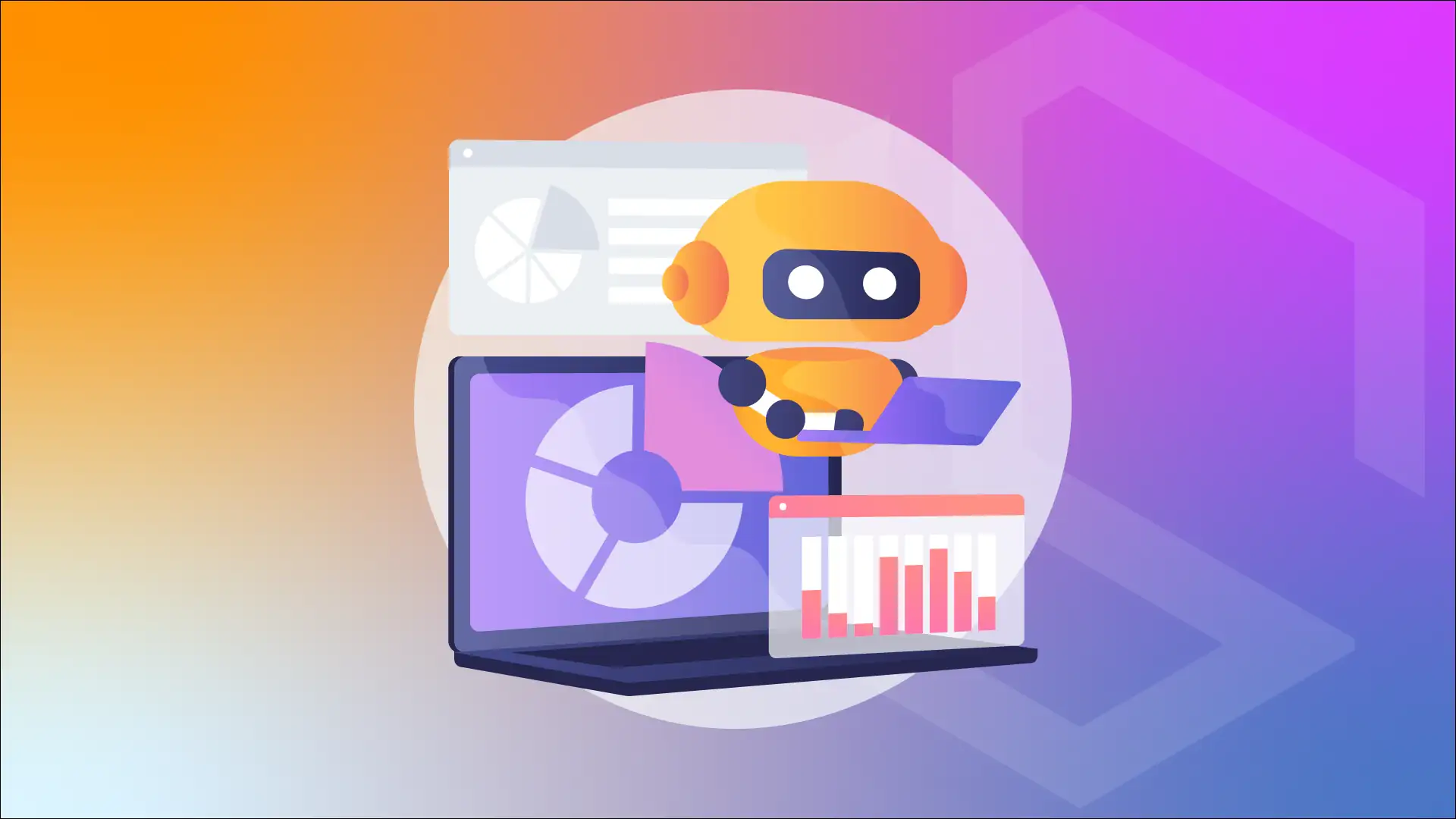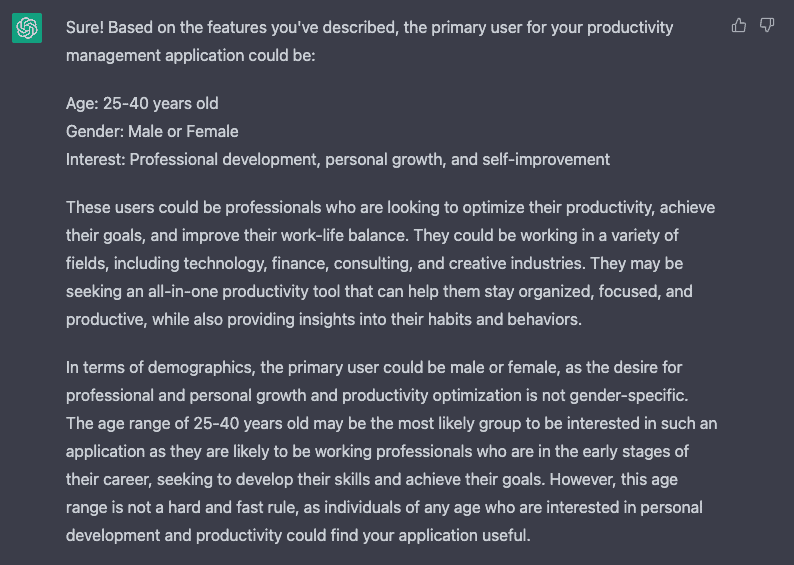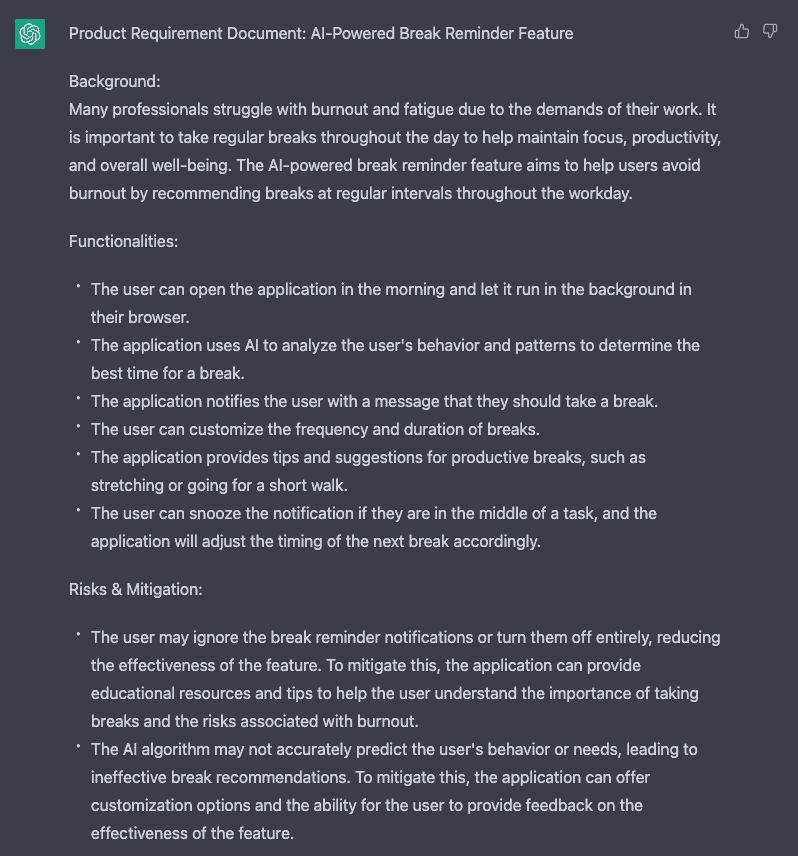Combining AI with Product Management using ChatGPT
Discover the power of combining AI with product management using ChatGPT. Learn how to leverage this tool to gain valuable insights into customer needs and preferences, streamline processes, and make data-driven decisions for business success.

The world of product management is evolving rapidly, and advancements in technology have brought about exciting new possibilities. One such possibility is the integration of Artificial Intelligence (AI) with product management. By combining the power of AI with product management, businesses can make more informed decisions, stay ahead of the competition, and improve customer satisfaction.
Introduction
ChatGPT is a powerful tool that can help businesses achieve this. ChatGPT is a language model developed by OpenAI that can generate human-like responses to natural language prompts. It can be used to generate text for a wide range of purposes, from customer support to market research.

In this blog post, I will explore the benefits of combining AI with product management and discuss how ChatGPT can be used as a tool for achieving this. I will also provide real-world examples of how ChatGPT has been used in product management, as well as best practices for incorporating AI in product management processes.
If you are ready, then let's move on ✌️
Understanding AI and Product Management
Before diving into how ChatGPT can be used in product management, it is important to understand what AI and product management mean and how they relate to each other.
AI is a field of computer science that focuses on creating intelligent machines that can perform tasks that typically require human intelligence, such as learning, problem-solving, and decision-making. AI can be used in a variety of industries, including healthcare, finance, and e-commerce.
Product management, on the other hand, is the process of overseeing the development and launch of a product or service. Product managers are responsible for defining the product's vision, strategy, and roadmap, as well as working closely with cross-functional teams to ensure successful product launches and ongoing improvements.
So, how do AI and product management relate to each other? AI can be used in product management to analyze large amounts of data and provide insights that can help product managers make informed decisions. For example, AI can be used to analyze customer data to identify trends and preferences, or to forecast demand for a product or service.
By incorporating AI into product management, businesses can gain a competitive advantage by making data-driven decisions and launching products that better meet customer needs.
In the next section, I will explore how ChatGPT can be used as a tool for incorporating AI into product management processes.
Using ChatGPT in Product Management
ChatGPT can be used in various ways to help product managers make informed decisions. Here are a few examples of how ChatGPT can be used in product management.
- Market research - ChatGPT can be used to generate survey questions and analyze responses to gain insights into customer needs and preferences. This can help product managers better understand their target audience and develop products that better meet their needs.
- Product development - ChatGPT can be used to generate product descriptions, user manuals, and other product documentation. This can save time for product managers and ensure that product information is accurate and consistent.
- Customer feedback - ChatGPT can be used to analyze customer feedback from various sources, such as social media and online reviews. This can help product managers identify areas for improvement and make data-driven decisions to improve customer satisfaction.
The benefits of using ChatGPT in product management are many. ChatGPT can save time by automating tasks such as generating product documentation, and it can provide valuable insights into customer needs and preferences that can inform product development and marketing strategies.
Furthermore, ChatGPT can be customized to meet the specific needs of a business, allowing product managers to tailor their use of the tool to their specific goals and objectives.
In the next section, I will discuss best practices for using ChatGPT in product management to ensure accuracy and mitigate potential limitations.
Best Practices for Using ChatGPT in Product Management
While ChatGPT can be a valuable tool for product managers, it is important to follow best practices to ensure accuracy and mitigate potential limitations. Here are a few best practices for using ChatGPT in product management:
- Set clear goals - Before using ChatGPT, it is important to define clear goals and objectives. This will help ensure that the tool is used effectively and that it provides actionable insights that can inform product management decisions.
- Use high-quality data - ChatGPT relies on high-quality data to generate accurate responses. It is important to ensure that the data used is relevant and accurate to ensure that the responses generated are also accurate.
- Incorporate human judgment - While ChatGPT can provide valuable insights, it is important to incorporate human judgment into the decision-making process. Product managers should use ChatGPT-generated insights as a tool to inform their decisions, rather than relying solely on the tool.
- Ensure accuracy - ChatGPT may generate inaccurate responses, especially when dealing with complex or nuanced issues. It is important to review and verify the responses generated by ChatGPT to ensure their accuracy before using them to inform product management decisions.
Examples of how ChatGPT can be used in product management
Below are two examples that came to my mind of how ChatGPT can be used.
- A company used ChatGPT to analyze customer feedback and identify areas for improvement. By analyzing feedback from social media and online reviews, the company was able to identify common themes and pain points that informed its product development strategy.
- Another company used ChatGPT to generate product descriptions and user manuals. By automating these tasks, the company was able to save time and ensure that product information was accurate and consistent across all channels.
By following best practices and using ChatGPT strategically, product managers can gain valuable insights and make informed decisions that drive business success.
Real-World Applications
There are numerous real-world applications of ChatGPT in product management. Here are a few examples:
- E-commerce - ChatGPT can be used to personalize product recommendations for customers based on their browsing history and purchase history. By analyzing customer data, ChatGPT can identify products that are likely to appeal to individual customers, leading to increased sales and customer satisfaction.
- Healthcare - ChatGPT can be used to analyze patient data and provide insights into patient outcomes. For example, ChatGPT can be used to analyze patient symptoms and provide recommendations for treatment options, leading to more personalized and effective care.
- Finance - ChatGPT can be used to analyze financial data and provide insights into investment opportunities. By analyzing market trends and financial data, ChatGPT can identify investment opportunities that are likely to yield high returns, leading to increased profitability for businesses.
- Social Media - ChatGPT can be used to analyze social media data and provide insights into customer sentiment. By analyzing social media posts and comments, ChatGPT can identify trends and preferences among customers, leading to more effective marketing and product development strategies.
These are just a few examples of how ChatGPT can be used in product management across various industries. By leveraging the power of AI, businesses can gain a competitive advantage by making data-driven decisions and launching products that better meet customer needs.
I have personally used ChatGPT in an eCommerce API to tailor the shopping experience for the customer. The AI model was trained on a set of anonymous visitor data to give the AI model an idea of how users were navigating around and how products were connected to each other. The result was a massive gain in up-sell because of correct product recommendations instead of the standard "you might also like" products. Using the model the API was able to predict exactly the products a customer was likely to add to their basket in relation to the products they have been visiting and already added to their basket.
Real-World Example
In this section, I will provide you with a full example of how you can use ChatGPT to help you in the process of generating a new idea, doing the market research, figuring out your target customer group,
Idea Generation and Market Research Strategies
ChatGPT is the perfect tool for brainstorming ideas for a new product or feature in an already existing product. In the following I prompted ChatGPT with the following:
Generate three ideas to use AI in a personal focus application

I think I will go forward with the first idea for this post. An AI-Powered Personalized Productivity Tool. That sounds pretty cool, right? 😎 Let's do some market analysis.
Market Analysis for our Focus Productivity Tool
My next prompt for ChatGPT would be the following:
Awesome ideas! Please compare and contrast the features of the top 5 productivity tool apps on the market right now.

That's pretty cool! Keep in mind that ChatGPT is trained on data before 2021, so the answers may not be up-to-date, but it will give you a pretty good idea about the market leaders. As you can see, we are up against some big applications, but let's give it a try. Next up I will try to figure out who my customers are.
Figure out who your customers are
First I will start by telling a bit more about the product I would like to create. This is what I have come up with for this demo.
Okay, based on that I would like my application to be something link this: a productivity management application that provides notes, to-dos, to-learns, journaling, calendars, a vision board, knowledgebase, projects, an AI tool that learns from the user's behavior, analyzes their patterns, and suggests the most productive schedule for them. The application could suggest the most productive work hours, and the tasks that should be prioritized, and even recommend breaks to avoid burnout.
Let's ask ChatGPT if it can provide us with an idea of who our target customers would be.
Can you help give me an idea of who the primary user for such an application would be? Please specify their age, gender, and what they might be interested in.

Great, with this knowledge we can now create some personas for our potential customers. You can come up with as many as you would like, but here is one I just made up.
Create a user persona for a female between the age of 25-40 with an interest in self-improvement. She is a busy person, and might not have time to use the application.

Can it get any better? The response from ChatGPT is quite detailed - don't you think? Create some more personas and let the AI do the hard work for you. You are the thinker, and ChatGPT is the doer. Next up we will create a product requirements document for the AI feature that will prevent our users from burning out.
Creating a requirements document for a feature
To create such a document I have written the following prompt for ChatGPT.
Write a detailed product requirement document for an AI feature that recommends breaks to avoid burnout during a workday. The user can open the application in the morning and let it run in the background in their browser. The application should notify the user with a message that they should take a break. The document should include the following: background, functionalities, risks & mitigation, technical requirements, non-technical requirements, metrics, and the primary user flows.
The answer was a bit long, So I have cut the answer into multiple images below.


Product Requirement Document generated using ChatGPT
Complete the above task over and over again for each of your features in the application. This will help you and your team when it comes to the development of the product/application.
The above examples are only a few of the prompts you can provide for ChatGPT. My best suggestion for you is simply just to try and see what happens. If you would like more experience with AI marketing, SEO, etc... you can check out my other tutorials about ChatGPT.
Summary
Combining AI with product management offers numerous benefits for businesses. By leveraging AI tools such as ChatGPT, product managers can gain valuable insights into customer needs and preferences, streamline product development processes, and make data-driven decisions that drive business success.
ChatGPT, in particular, offers great potential as a tool for product managers. Its ability to analyze large amounts of data and generate accurate responses makes it a valuable asset for businesses seeking to stay ahead of the competition.
However, it is important to follow best practices and use ChatGPT strategically to ensure accuracy and mitigate potential limitations. By setting clear goals, using high-quality data, incorporating human judgment, and ensuring accuracy, product managers can make the most of ChatGPT and other AI-powered tools.
As AI continues to evolve, there is great potential for further exploration of AI-driven product management. By embracing these technologies and using them to inform product development and marketing strategies, businesses can gain a competitive edge and achieve greater success.
In conclusion, the combination of AI and product management offers a powerful approach to driving business growth and success. By leveraging tools like ChatGPT, product managers can make informed decisions, streamline processes, and ultimately deliver better products and experiences for customers.